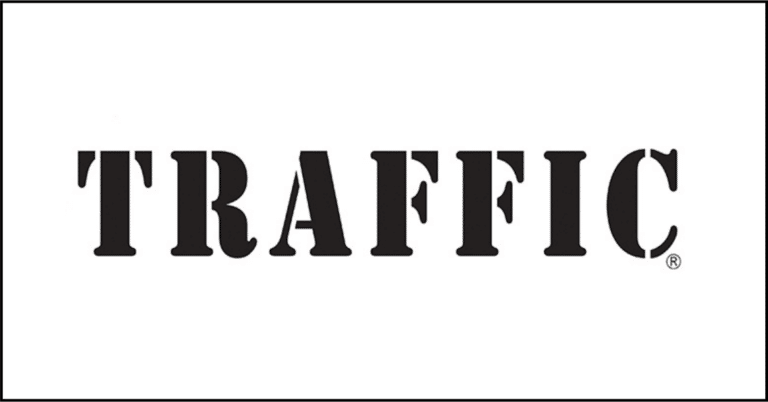How TRAFFIC uses Videris to fight environmental crime

About TRAFFIC
TRAFFIC is a leading non-governmental organisation working globally on trade in wild animals and plants, in the context of both biodiversity conservation and sustainable development.
As an organisation, its activities involve researching, investigating and analysing both the legal and illegal trade of wildlife, often used for food, fashion, medicine, pets, furniture and more.
As a leading specialist in wildlife conservation, TRAFFIC curates data about the wildlife trade for use by law enforcement and organisations such as financial institutions in order to inform anti-money laundering measures. This data can range from records of illegal wildlife trade incidents, to market monitoring data, to information provided by members of the public.
The Opportunity
TRAFFIC recently commenced a new ‘big data analytics’ project targeting corruption within the natural resource sector. As part of this, TRAFFIC is collecting publicly available data about people and companies involved in logging contracts and screening them for potential indicators of corrupt practice. However, they realised that they had limited ability to find out more about the individuals who potentially could be suspected of corruption, beyond using internal databases. As a result, they began searching for a solution that would allow them to:
- Enrich target profiles with other data, such as that from corporate registries and publicly available social media
- Use search engines to cross-reference target names against a list of risk terms
- Search leaked information and the dark web
By adding these OSINT capabilities to its repertoire, TRAFFIC hopes to improve its ability to identify potential criminal activity in the timber logging sector and beyond.
The Solution
Antony Bagott, Database Manager at TRAFFIC, describes the platform as having ‘a one-size-fits-all solution for all of our requirements, providing a single tool with which we can find instances of corruption in the natural resource sector’.
Videris provides investigators with the ability to enrich existing data with live information from the internet – including data from corporate registries, publicly available social media (powered by ShadowDragon©), search engines, leaked data repositories, the dark web and more. It also allows investigators to perform faster, more targeted searches across these sources.
Once they had decided to procure Videris, TRAFFIC was also delighted to be able to get started quickly. Videris can be deployed flexibly and easily, ensuring fast time to value for TRAFFIC staff, who were using the system within days following an initial training session with a Blackdot expert. The team also found Videris very intuitive to use, in particular its powerful yet easy-to-understand charting capability.
The Result
Today, Bagott’s team continue their work by using a number of big data analysis tools to identify individuals of interest who may potentially be involved in corrupt wildlife trade practices. Once a shortlist of targets has been produced, Videris can be used to enrich this list with dynamic, constantly updated information from the internet. The data to which Videris gives access helps TRAFFIC find additional potential indicators of corruption, and ultimately helps identify criminals working within the logging sector.
For Bagott, being able to collect live data straight from the Videris chart is a game-changer. ‘For example,’ he says, ‘we can find a name, a social media profile, and the people associated with it within a few minutes – which would normally take us a long time’. These datapoints allow him to find links between various actors in the network. ‘Given that the information is live and constantly updating, fast access to the data is vital to the success of the project.’
He also cites Videris’s automated sourcing functionality as extremely useful: each time the user saves a piece of data, Videris creates a screenshot, stores the link, and highlights where the specific text/image is copied from. ‘This is a really good way of keeping a trail of information that you’ve been collecting,’ says Bagott. ‘We’ve done all of this manually with our wildlife trade data in the past, but the automation within Videris makes the whole workflow much more efficient.’ Investigators are not distracted by having to remember to save evidence and are able to do everything within Videris rather than having to switch between platforms.
Introducing Videris has improved TRAFFIC’s access to critical insights through the inclusion of live internet data in their big data analytics project. Videris has also increased their efficiency through the improved workflow and single pane of glass that Videris provides. TRAFFIC has been able to identify more potential individuals of interest in a shorter timeframe than before, which they expect to have a material impact on their ability to identify illegal activity.
What’s next?
Historically, criminals have found it easy to use clear web sources to sell illegal wildlife products, meaning that TRAFFIC has had little need for dark web access. However, Bagott says that recent initiatives such as the Coalition to End Wildlife Trafficking Online mean that more criminals may move to using the dark web in order to cover their tracks. This will bring a requirement for TRAFFIC to also use the dark web. As Videris offers secure access to dark web data without the need for additional browsers, they will be able to do so safely and easily.
Overall, Bagott says that Videris has ‘opened our eyes to ways we could be using publicly available data sources to combat the illegal trade of wildlife’. TRAFFIC and Blackdot Solutions are looking forward to continuing success in taking TRAFFIC’s work to the next level.
Learn more about TRAFFIC
Find out more about TRAFFIC at traffic.org



